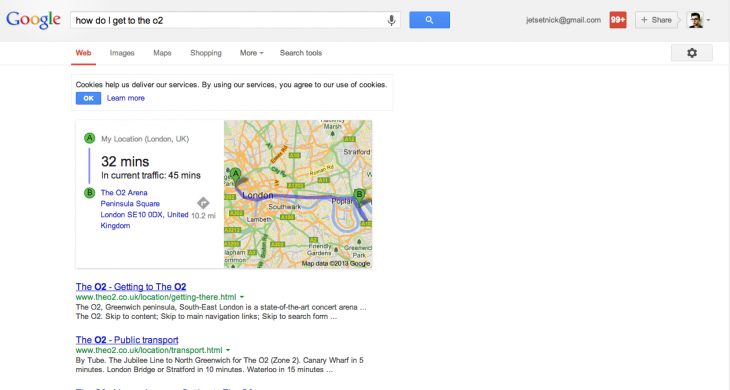
Google has quietly rolled out its new conversational search feature in the latest version of its Chrome browser for Windows, Mac and Linux.
Users that hit up the Google homepage will now see a small microphone symbol in the right-hand side of the search field, as well as at the top of any page containing search results; it will ask for permissions to access a connected microphone, before enabling conversational search queries.
The update means that users can now search the Internet and ask Google questions from the desktop using only their voice. The idea is that people should be able to use words and phrases used in everyday conversation, rather than the strict keywords that have been embedded in our brains over the last decade or so.
The user could ask, for instance, ‘How do I get to Wembley Stadium?’, and Google will interpret the question and then serve up relevant route information via Google Maps. As with Google Now, the service also draws on information stored through other Google products and services. If the user asks when their flight is supposed to leave, or if they’re free later this afternoon, the service will automatically dig into Google Calendar to check.

Subsequent queries can then be initiated using the phrase “Okay Google”, similar to that found in its upcoming Google Glass hardware. Google is clearly developing these new search products as a context-sensitive personal assistant. Voice input might feel jarring for some, but the ability to discover new information on the Web and apply that to users’ own daily routine and information is a powerful concept.
As with Google Now, conversational search should help to provide users with information at the right time, when they need it. Bringing the feature to all major desktop operating systems should give all Google users access to the service, regardless of what device they’re using.
Image Credit: Adam Berry/Getty Images
Get the TNW newsletter
Get the most important tech news in your inbox each week.





